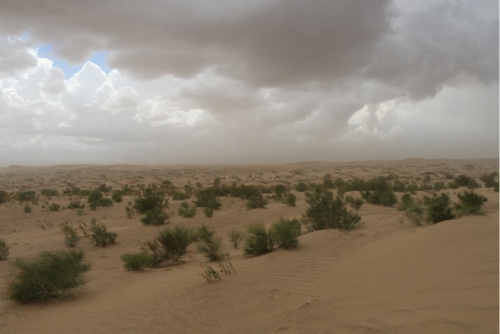Ecosystems have increasingly been subject to the stress of heavy drought under global warming. To quantify its impacts, a drought index that can sensitively depict the reaction of vegetation to drought evolution is necessary at a biological time scale. The difference between actual and potential evapotranspiration, technically termed a standardized evapotranspiration deficit drought index (SEDI), can more sensitively capture the biological changes of ecosystems in response to the dynamics of drought intensity, compared with indices based on precipitation and temperature. Prof. Zhuguo MA, Director of the Key Laboratory of Regional Climate-Environment for Temperate East Asia at the Institute of Atmospheric Physics, Chinese Academy of Sciences, and his team, have published this finding in Advances of Atmospheric Sciences.
"In terms of the role played by evapotranspiration deficit in connecting climate and ecosystem processes, SEDI has the potential of highlighting drought impacts on ecological processes," says Associate Prof. LI Mingxing, corresponding author of the study.
"Actually, several studies have used evapotranspiration deficit in drought studies. However, their potential in delineating vegetation responses to climatic fluctuations and heavy droughts has not yet been specifically assessed, in contrast to the evaluation of their detection ability," he states. "The objective of this study was, based on the standardized evapotranspiration deficit, to define a drought index and assess its effectiveness in highlighting vegetation responses to drought evolution."
The team defined a drought index according to the difference between actual and potential evapotranspiration from both observation and reanalysis data, and determined the classifications according to a percentile approach. The performance of SEDI besides three commonly used drought indices (scPDSI, SPI, and SPEI) and soil moisture was examined.

Drought in Wuwei, Gansu Province, located in northwest China. Photo taken in July 2015. (Image by ZHANG Jingpeng)
"Our study shows that SEDI can reasonably detect droughts and climatic dry and wet transitions, especially at the monthly scale, and can regenerate climatic long-term trends. Moreover, SEDI is more practical than indices of precipitation and temperature in highlighting biological effects in climate droughts. That is mainly because SEDI involves water and energy processes that can both be affected by the vegetation," explains Dr. ZHANG Xia, lead author of the study.
"In the future, we intend to focus on the potential of quantifying the relationships of ecological processes with dry and wet changes and the use in projections of regional ecological environments with climate change," adds the team’s PI, Prof. MA.
Citation: Zhang, X., M. X. Li, Z. G. Ma, Q. Yang, M. X. Lv, and R. Clark, 2019: Assessment of an evapotranspiration deficit drought index in relation to impacts on ecosystems. Adv. Atmos. Sci., 36(11), 000–000, https://doi.org/10.1007/s00376-019-9061-6.
